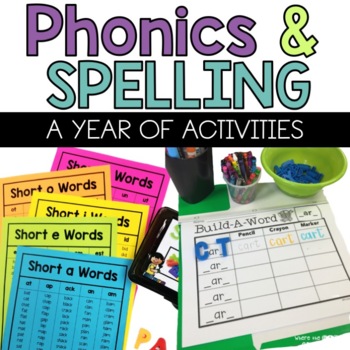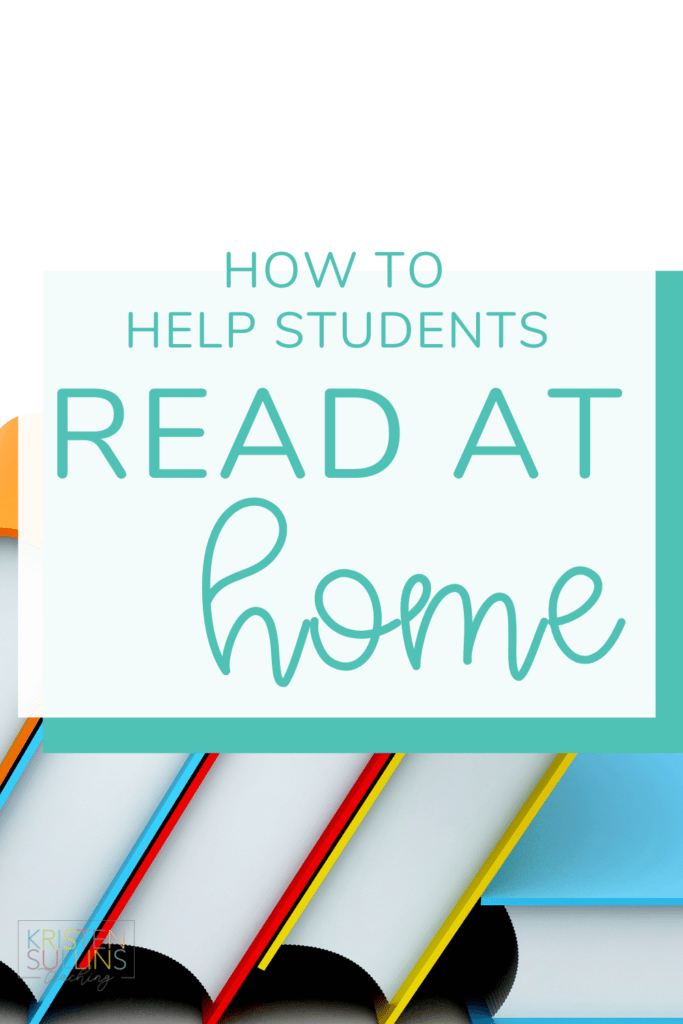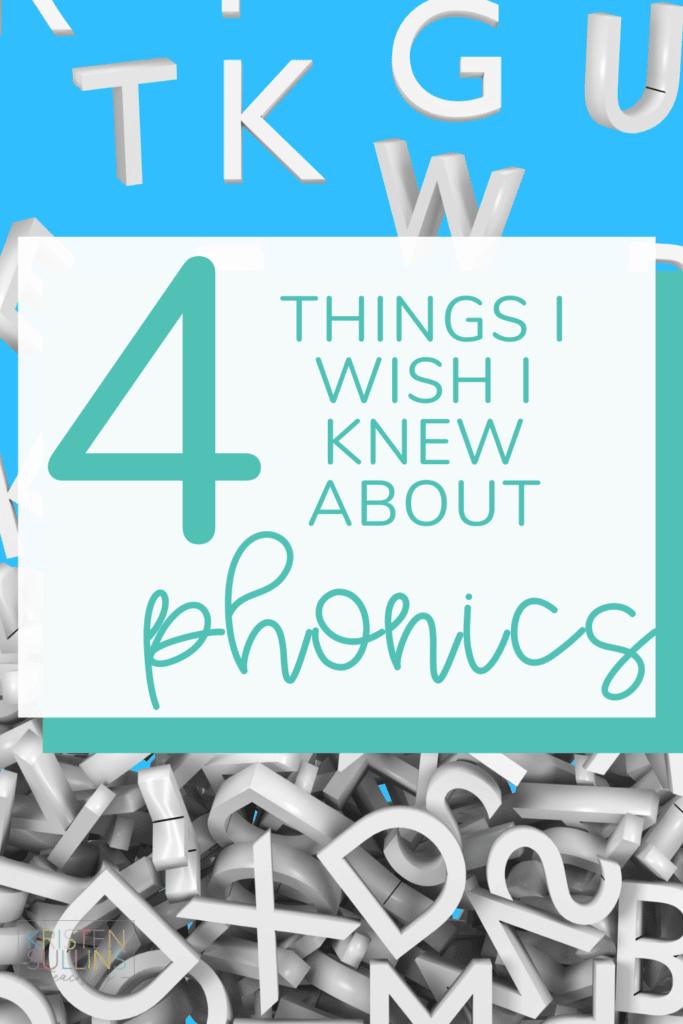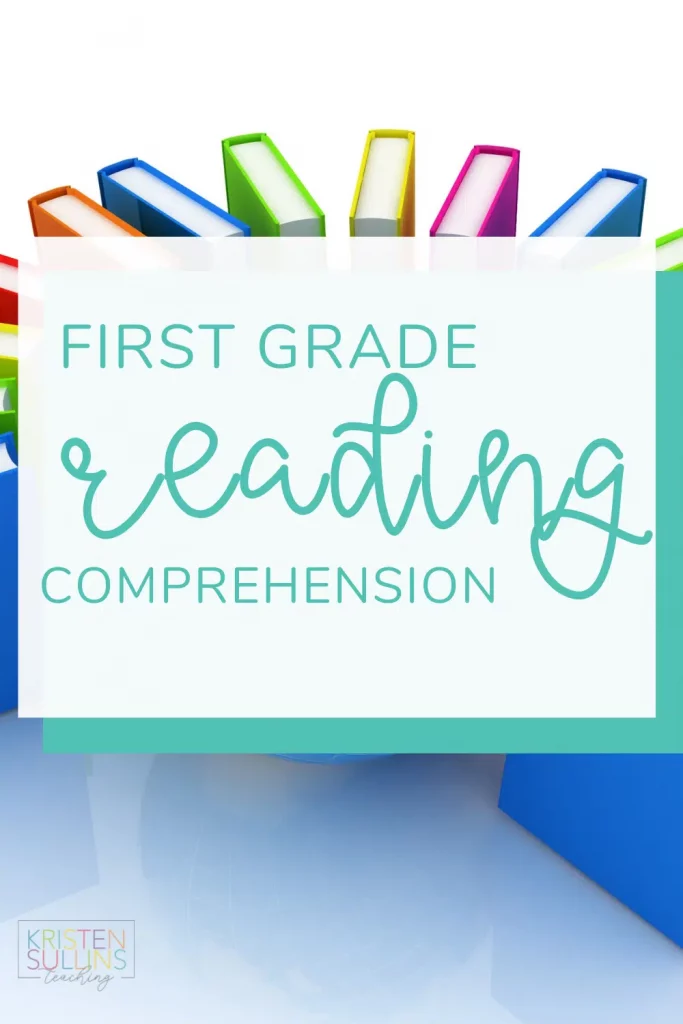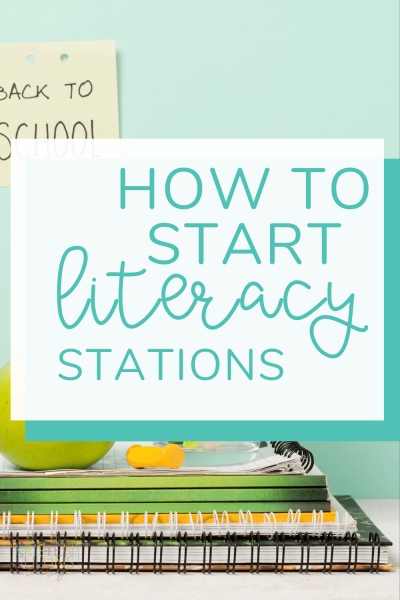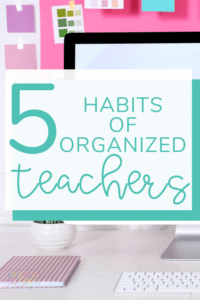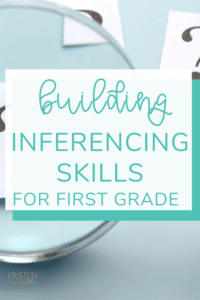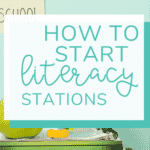Literacy centers are a great way for first grade students to work independently, or collaboratively, on skills that they have been learning.
It is a great way to provide meaningful experiences for your students where they are able to practice and hone skills that have been taught in class.
There are a variety of literacy centers ideas out there, and you need to find what works best for you and your students.
In first grade my go-to centers include:
- a phonics work packet
- writing
- poetry journal
- word work
- technology
Pocket charts are also something I include with our word work or phonics center time.
I used to include a read-to-self center, but luckily I have been able to make read-to-self time work with my schedule and have removed it from my centers.
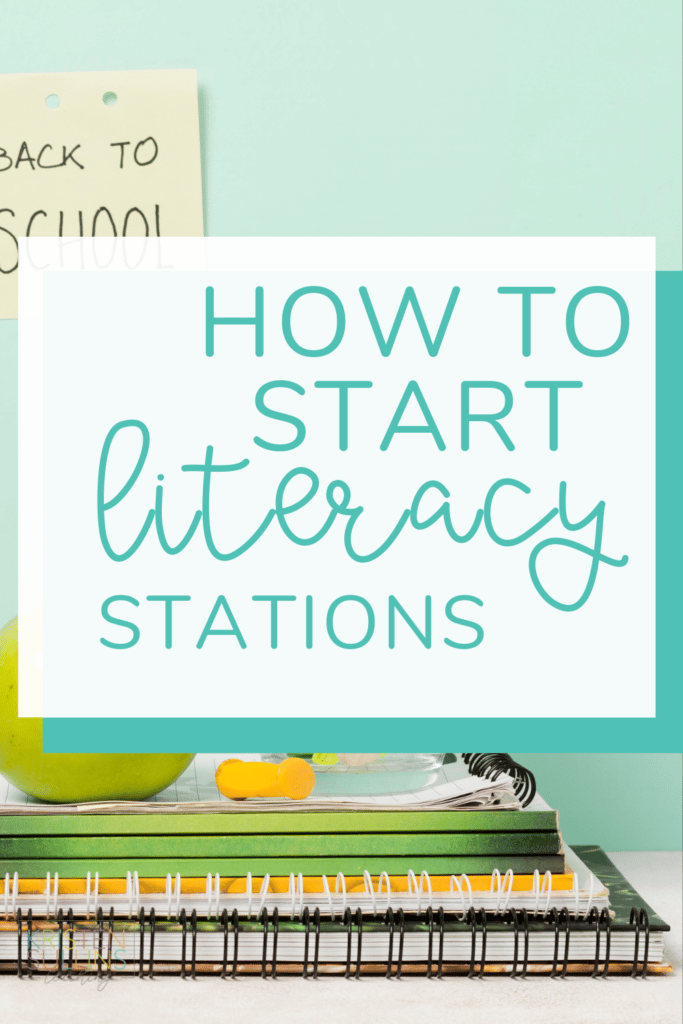
Do’s and Don'ts of First Grade Literacy Centers
It is important that the skills being worked on at centers are things students have already been taught.
Literacy Centers are not a place where students should be learning something new, they should be practicing something that has already been taught, practiced and reinforced.
Getting Started with First Grade Literacy Centers
Something you need to decide on before even creating your centers is how you are going to structure student time.
For example, are you going to have students rotate from one center to another, hitting 3-6 centers a day?
Or are you going to have “must do’s” and “can do’s”, where students have things they must complete before they select another center to work at?
Both of these strategies for approaching how you run your centers have been very successful to me in the past.
There are pros and cons to both, but you just need to find what makes the most sense for you, your class, and the time you have.
You also need to really think about how much time you will have to spend changing out these centers, the amount of time it will take a child to complete a center task, and how you are going to hold students accountable.
What I have done the last couple years is create SIX centers, but students only rotate through THREE a day.
So we have a DAY 1 and a DAY 2. Students will go to 3 centers and will follow a chart I created to show them what center they should go to and when.
This eliminates chaos and allows me to keep the groups small while they are going to their select centers.
Here is how I set up and get this all going smoothly:
3 Steps to First Grade Literacy Stations
Step One: Assign Students to a Group
I prefer to use a symbol or picture to break my groups up; animals or fruit for example.
The groups are always mixed-ability, because as research has taught us, students who work with others of different abilities often have a higher success rate.
Believe it or not, the higher our expectations of our students are the better the results will be. It’s true!
Create a way for students to know their group.
I print out pictures of animals and tape them to each student's desk. For example, if you are in the elephant group you will have a picture of an elephant taped to your desk.
I also write each student's name on a larger chart that has the picture. This helps me know where students are supposed to be as well.
Always print off extra animals because sometimes the groups you create don’t work and you have to shuffle kids around.
If they have to switch animal groups, it may be confusing for them at first, but they can handle it!
Here is a picture of my DAY 1 Literacy Stations rotation chart:

Each student starts out at round one, when I ring my bell they clean up and rotate to their next round. Depending on my schedule these stations are usually 12-15 minutes long.
Step Two: Introduce One Literacy Center at a Time
I always start out by doing whole group center work, so before students go from one to the next, we discuss and practice what this time will look like.
I am a big lover of anchor charts, so we create mini-charts that discuss each Literacy Station rules and procedures.
I introduce one station at a time, whole group, using “I do”/”we do”/”you do”.
Afterwards we discuss what should happen during this station, what student expectations are and we add them to our anchor chart.
*I typically do one station a day, but lump my two technology stations (chromebooks and iPads) together.
After one week, students should have an understanding of how each station works.
Step Three: Just go for it!
The following week, we give it a go! I am always very careful to put activities that are easy to understand, engaging, and can be completed in the 12-15 minute time-frame. As the year progresses, I put more challenging things in each station, making sure that it is something students will be able to complete on their own.
Be sure to have a system for how students clean-up and rotate. I have a bell, but timers are also just as effective.
**Give yourself grace this week and maybe even some extra time. Back when I taught kindergarten I would have everyone return to the rug in between each station so we could recoup and calm down. This is something that works great and would be beneficial in any primary grade.**
Frequently Asked Questions about First Grade Literacy Stations
What do you do if a student doesn’t finish the center work?
Each student in my classroom has a work folder for incomplete work.
Whenever a student has a free moment, they should spend that time finishing this work.
I check these folders weekly and, with the student, we discuss how and when they are going to finish their work.
They do a great job thinking about and deciding how to best complete these tasks.
I like to put as much of that responsibility back on them as I can.
What is the teacher doing during these literacy centers?
The first two weeks, introducing the literacy centers and practicing the rotations, I’m right there with the students. Monitoring and helping out as much as possible.
I want my students to really know what is expected of them and how to meet those expectations.
At the start of week three we have a class meeting at the rug. We quickly go over each mini-anchor chart we created to help everyone remember the station expectations. I then pull out a new mini-anchor chart with the heading
What is the teacher doing?
We discuss what it is I will be doing during this time. I am often pulling students one-on-one or in small groups to do explicit phonics instruction.
I create this anchor chart so students know what I am doing and when/if they should interrupt.
I know some teachers have rules about not being interrupted while they are at their “teacher table” and making sure students understand these rules is very important.
I do not have set groups I am working with during this time. I used to have a specific schedule with what students I worked with when, but with the ever-changing needs of my students I have been a lot more fluid with my table group work.
In the beginning of the year I really want to focus on those phonics skills with my students, making sure they are understanding the key concepts being taught.
I then move into more set groups as the year progresses incorporating guided reading into the mix of my groups.
So what questions do you have?
I know creating literacy centers can often seem daunting and the thought of changing out these centers is time consuming, but once you establish a good routine they are SO WORTH IT!
I feel happy students are working on mastering skills, while I am able to focus on smaller groups of students.
It is almost as if a weight is being lifted when you get into a good routine with your centers.
Need Literacy Center Materials for First Grade?
Are you a busy and tired teacher who needs to fulfill the phonics and spelling needs of their emerging first grade readers?
This year long Phonics and Spelling activity bundle is a 5-Part phonics kit for teachers to use when teaching students about spelling and phonics patterns (word families).

